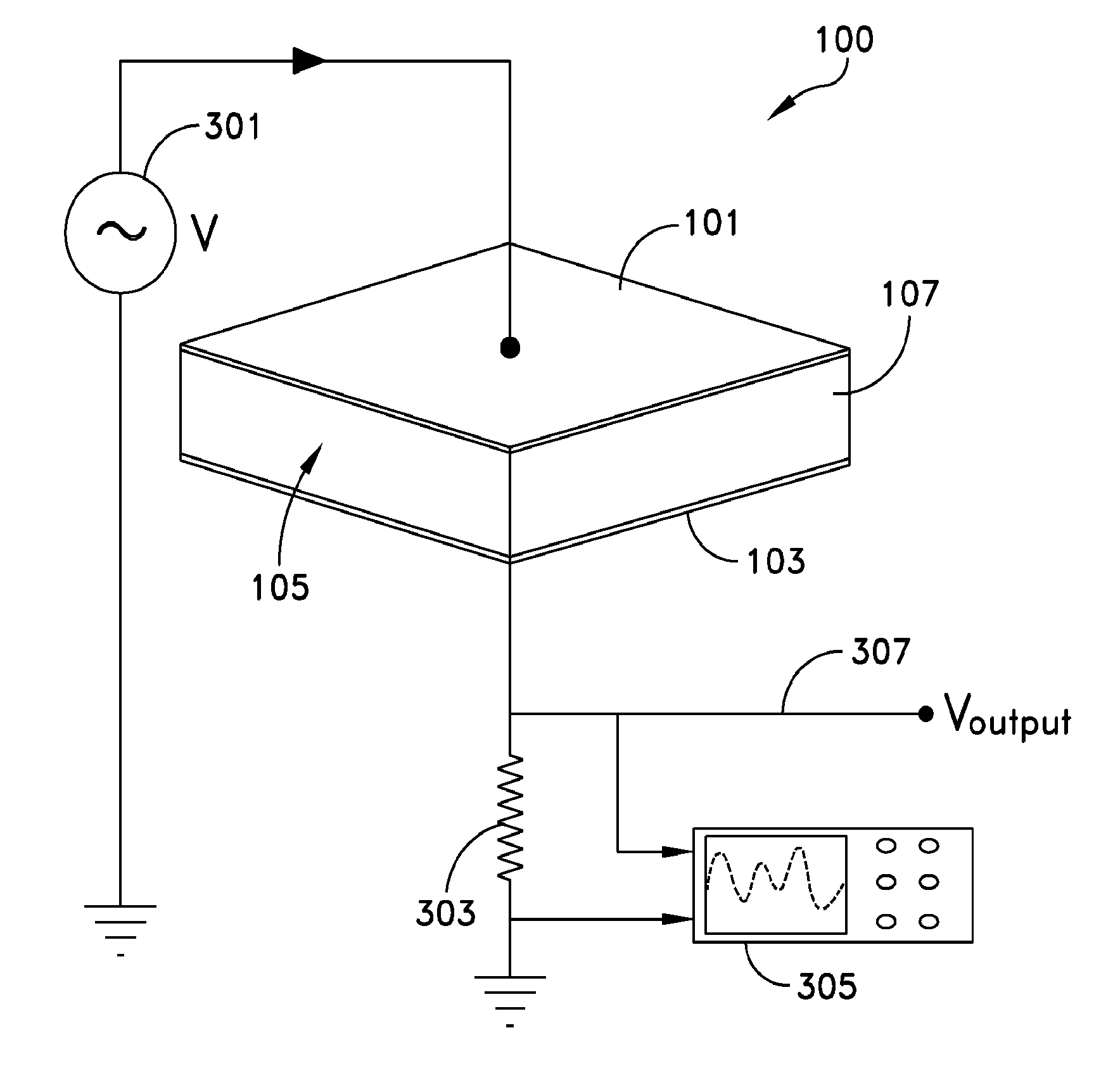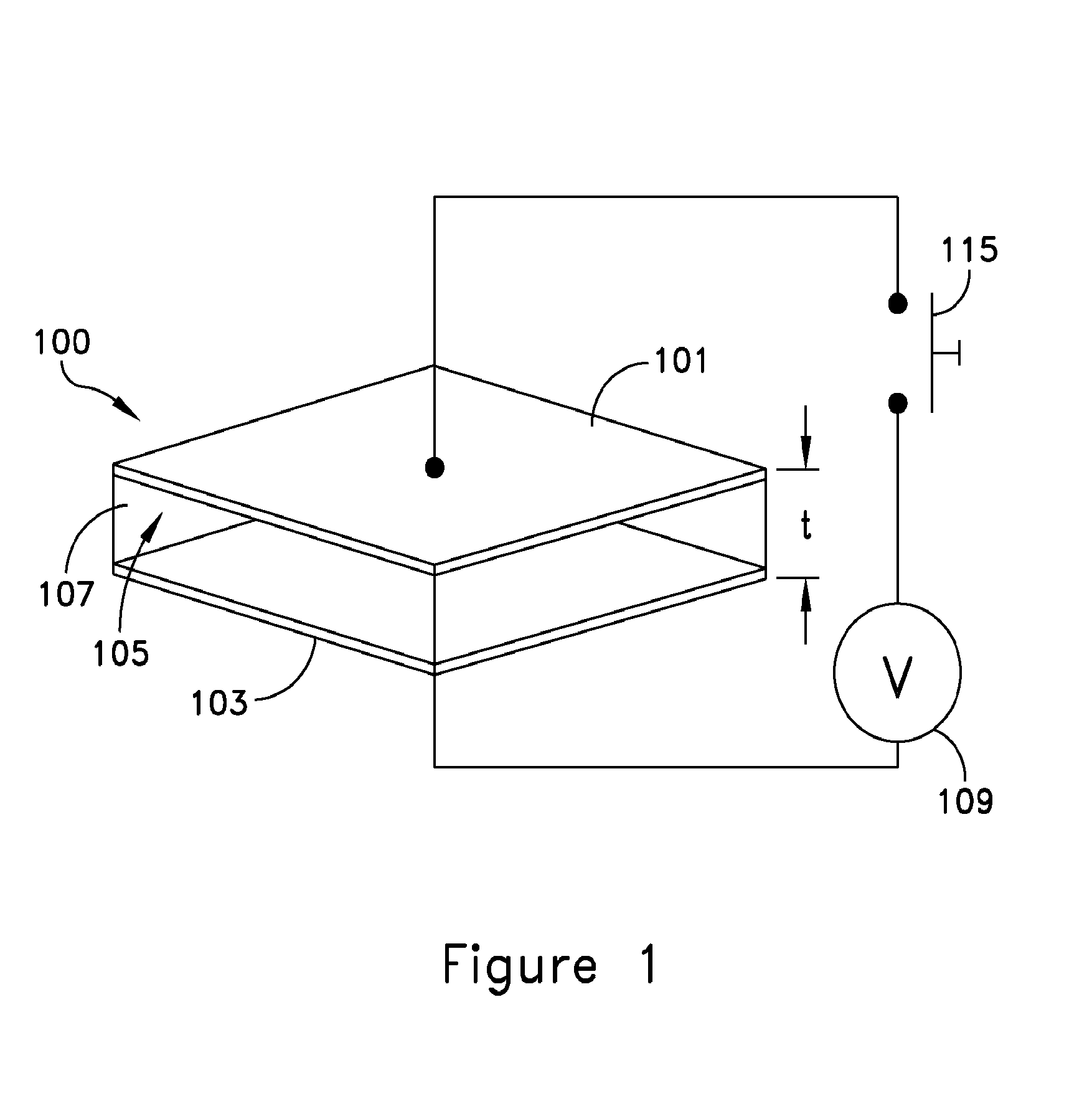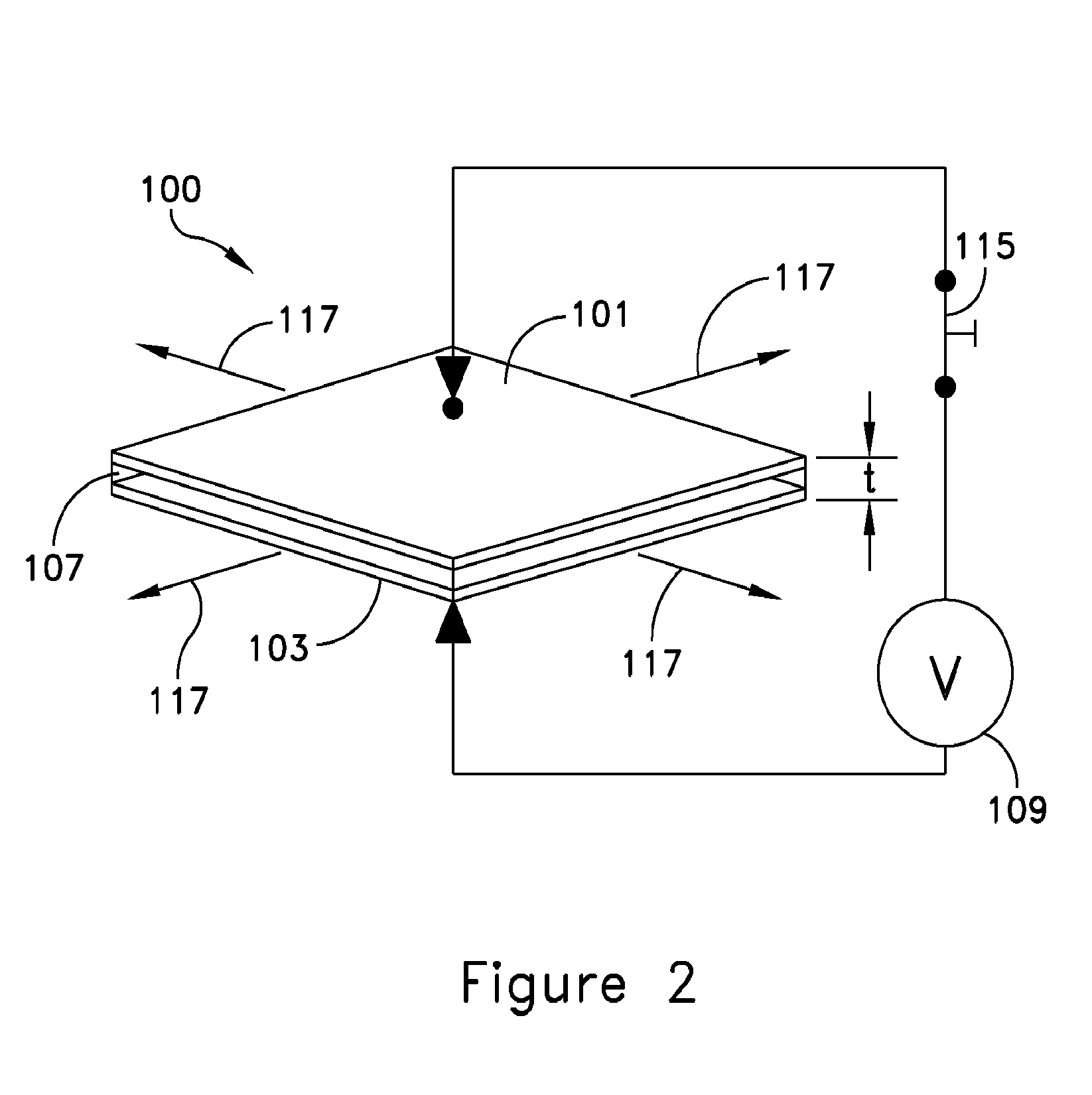Self-sensing dielectric actuator system
- Summary
- Abstract
- Description
- Claims
- Application Information
AI Technical Summary
Problems solved by technology
Method used
Image
Examples
Embodiment Construction
[0029]Several embodiments of a self-sensing actuator are described. Some embodiments use an electro-active polymer such as a dielectric elastomer (DE) for a dielectric. A self-sensing actuator according to the principles of the invention is simultaneously operable as an actuator and a sensor without additional independent sensing devices or additional electrodes.
[0030]An embodiment of a self-sensing dielectric actuator system 100 is shown in FIGS. 1 and 2. A deformable first electrode 101 is separated from a second electrode 103 by a space 105. The second electrode may also be deformable. A dielectric material 107, for example a dielectric elastomer (DE), is disposed in the space 105 between the electrodes. The electrodes may be separate sheets of material or they may be formed on opposing surfaces of the dielectric material.
[0031]An actuating signal source 109 is configured to apply an electric potential across the electrodes and thereby cause the dielectric material to deform the ...
PUM
 Login to View More
Login to View More Abstract
Description
Claims
Application Information
 Login to View More
Login to View More - R&D
- Intellectual Property
- Life Sciences
- Materials
- Tech Scout
- Unparalleled Data Quality
- Higher Quality Content
- 60% Fewer Hallucinations
Browse by: Latest US Patents, China's latest patents, Technical Efficacy Thesaurus, Application Domain, Technology Topic, Popular Technical Reports.
© 2025 PatSnap. All rights reserved.Legal|Privacy policy|Modern Slavery Act Transparency Statement|Sitemap|About US| Contact US: help@patsnap.com



